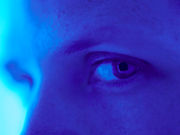No correlation for diabetes with other eye infections; glycemic control not linked to any infection
FRIDAY, Jan. 6, 2017 (HealthDay News) — Diabetes is associated with increased incidence of conjunctivitis, according to a study published online Dec. 29 in Diabetes Care.
Abdus Samad Ansari, from the University of Surrey in Guildford, U.K., and colleagues conducted a two-stranded study to examine whether infectious disease affecting the external eye and surrounding structures is associated with diabetes. They measured the incidence of infections over six years in a whole population cohort study to examine the frequency of eye infections in those with versus without diabetes, and in a cohort study in a population with diabetes to examine the impact of glycemic control on eye infection rates. The total population was 938,440 individuals without diabetes and 48,584 individuals with diabetes (3,273 with type 1 diabetes and 45,311 with type 2 diabetes).
The researchers found that type 1 and type 2 diabetes correlated with significantly increased incidence of conjunctivitis after adjustment for confounders and amendment of P values for multiple comparisons using the Bonferroni and Sidak corrections (odds ratios, 1.61 and 1.11, respectively). There were no correlations with blepharitis, stye/chalazion, periorbital cellulitis, keratitis/keratoconjunctivitis, lacrimal gland infection, or endophthalmitis. There was no correlation for glycemic control with any infection. Diabetes also correlated with significantly increased incidence of antimicrobial prescriptions (odds ratios, 1.69 and 1.17 for type 1 and 2 diabetes, respectively).
“We found that conjunctivitis occurs more frequently in people with diabetes,” the authors write.
Several authors disclosed financial ties to the pharmaceutical, medical technology, and medical device industries.
Full Text (subscription or payment may be required)
Copyright © 2017 HealthDay. All rights reserved.








